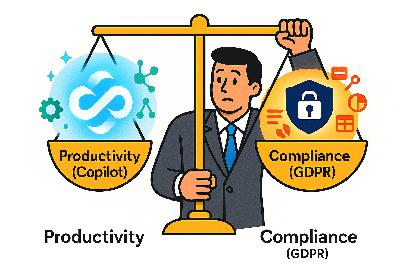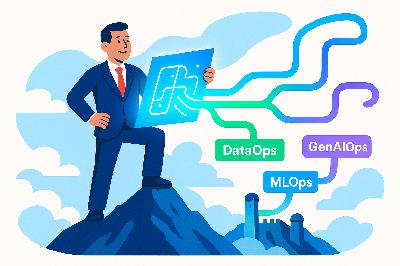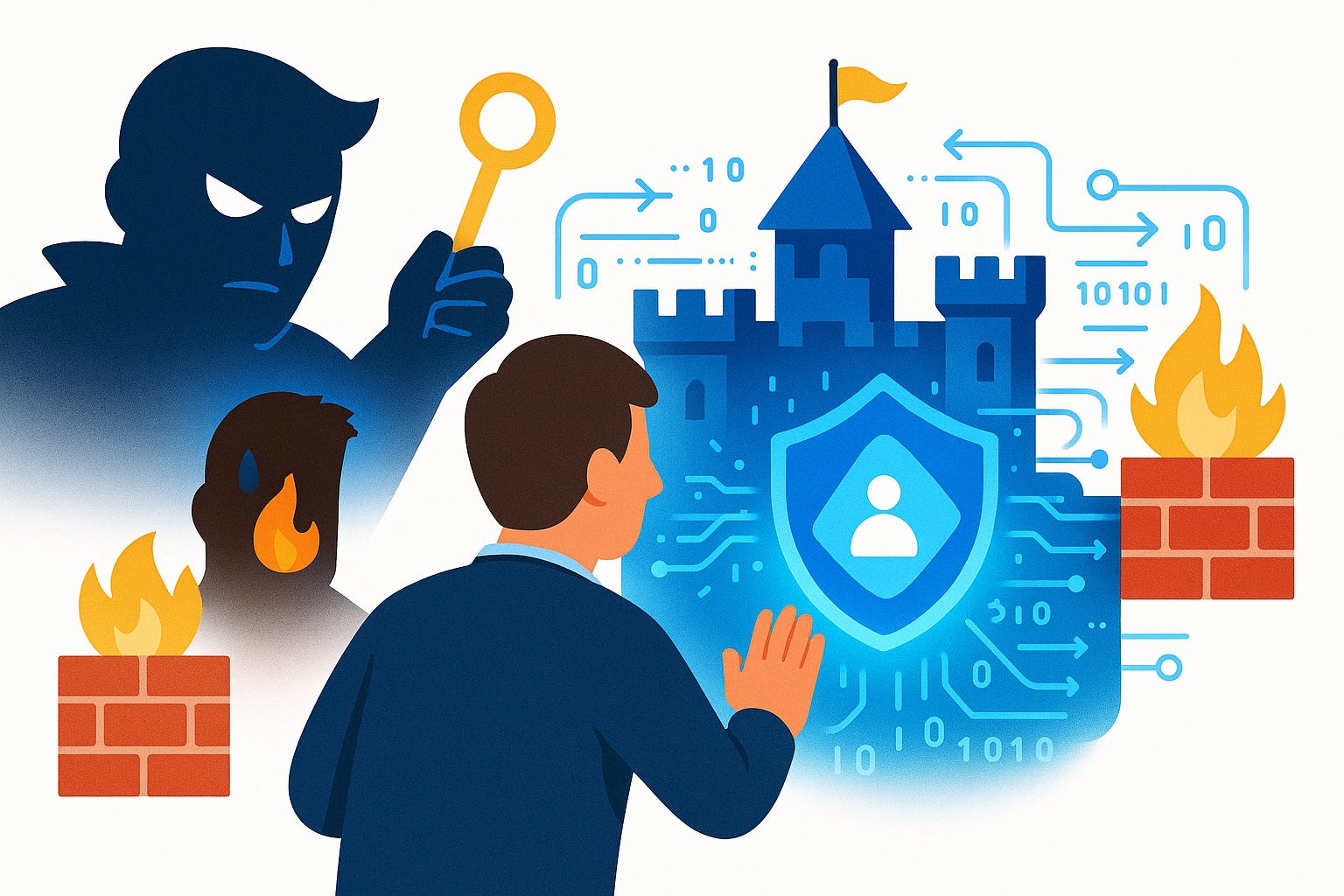Master Dataverse Security: Stop External Leaks Now
Description
Opening – The Corporate Leak You Didn’t See Coming
Let’s start with a scene. A vendor logs into your company’s shiny new Power App—supposed to manage purchase orders, nothing more. But somehow, that same guest account wanders a little too far and stumbles into a Dataverse table containing executive performance data. Salaries, evaluations, maybe a few “candid” notes about the CFO’s management style. Congratulations—you’ve just leaked internal data, and it didn’t even require hacking.
The problem? Everyone keeps treating Dataverse like SharePoint. They assume “permissions” equal “buckets of access,” so they hand out roles like Halloween candy. What they forget is that Dataverse is not a document library; it’s a relational fortress built on scoped privileges and defined hierarchies. Ignore that, and you’re effectively handing visitor passes to your treasury.
Dataverse security isn’t complicated—it’s just precise. And precision scares people. Let’s tear down the myths one layer at a time.
Section 1 – The Architecture of Trust: How Dataverse Actually Manages Security
Think of Dataverse as a meticulously engineered castle. It’s not one big door with one big key—it’s a maze of gates, guards, courtyards, and watchtowers. Every open path is intentional. Every privilege—Create, Read, Write, Delete, Append, Append To, Assign, and Share—is like a specific key that opens a specific gate. Yet most administrators toss all the keys to everyone, then act surprised when the peasants reach the royal library.
Let’s start at the top: Users, Teams, Security Roles, and Business Units. Those four layers define who you are, what you can do, where you can do it, and which lineage of the organization you belong to. This is not merely classification—it’s containment.
A User is simple: an identity within your environment, usually tied to Entra ID. A Team is a collection of users bound to a security role. Think of a Team like a regiment in our castle—soldiers who share the same clearance level. The Security Role defines privileges at a granular level, like “Read Contacts” or “Write to a specific table.” The Business Unit? That’s the physical wall of the castle—the zone of governance that limits how far you can roam.
Now, privileges are where most people’s understanding falls off a cliff. Each privilege has a scope—User, Business Unit, Parent:Child, or Organization. Think of “scope” as the radius of your power.
* User scope means you control only what you personally own.
* Business Unit extends that control to everything inside your local territory.
* Parent:Child cascades downward—you can act across your domain and all its subdomains.
* Organization? That’s the nuclear option: full access to every record, in every corner of the environment.
When roles get assigned with “Organization” scope across mixed internal and external users, something terrifying happens: Dataverse stops caring who owns what. Guests suddenly can see everything, often without anyone realizing it. It’s like issuing master keys to visiting musicians because they claim they’ll only use the ballroom.
Misalignment usually comes from lazy configuration. Most admins reason, “If everyone has organization-level read, data sharing will be easier.” Sure, easier—to everyone. The truth? Efficiency dies the moment external users appear. A single organizational-scope privilege defeats your careful environment separation, because the Dataverse hierarchy trusts your role definitions absolutely. It doesn’t argue; it executes.
Here’s how the hierarchy actually controls visibility. Business Units form a tree. At the top, usually “Root,” sit your global admins. Under that, branches for departments or operating regions, each with child units. Users belong to exactly one Business Unit at a time—like residents locked inside their section of the castle. When you grant scope at the “Business Unit” level, a user sees their realm but not others. Grant “Parent:Child,” and they see their kingdom plus every village below it. Grant “Organization,” and—surprise—they now have a spyglass overlooking all of Dataverse.
Here’s where the conceptual mistake occurs. People assume roles layer together like SharePoint permissions—give a narrow one, add a broad one, and Dataverse will average them out. Wrong. Roles in Dataverse combine privileges additively. The broadest privilege overrides the restrictive ones. If a guest owns two roles—one scoped to their Business Unit and another with Organization-level read—they inherit the broader power. Or in castle terms: one stolen master key beats fifty locked doors.
Now, add Teams. A guest may join a project team that owns specific records. If that team’s role accidentally inherits higher privileges, every guest in that team sees far more than they should. Inheritance is powerful, but also treacherous. That’s why granular layering matters—assign user-level roles for regular access and use teams only for specific, temporary visibility.
Think of the scope system as concentric rings radiating outward. The inner ring—User scope—is safest, private ownership. The next ring—Business Unit—expands collaboration inside departments. The third ring—Parent:Child—covers federated units like regional offices under corporate control. And beyond that outer ring—Organization—lies the open field, where anything left unguarded can be seen by anyone with the wrong configuration. The castle walls don’t matter if you’ve just handed your enemy the surveyor’s map.
Another classic blunder: cloning system administrator roles for testing. That creates duplicate “superuser” patterns everywhere. Suddenly the intern who’s “testing an app” holds Organization-level privilege over customer data. Half the security incidents in Dataverse environments result not from hacking, but from convenience.
What you need to remember—and this is the dry but crucial part—is that Dataverse’s architecture of trust is mathematical. Each privilege assignment is a Boolean value: you either have access or you do not. There’s no “probably safe” middle ground. You can’t soft-fence external users; you have to architect their isolation through Business Units and minimize their privileges to what they demonstrably need.
To summarize this foundation without ruining the mystery of the next section: Users and Teams define identities, Security Roles define rights, and Business Units define boundaries. The mistake that creates leaks isn’t ignorance—it’s false confidence. People assume Dataverse forgives imprecision. It doesn’t. It obediently enforces whatever combination of roles you define.
Now that you understand that structure, we can safely move from blueprints to battlefield—seeing what actually happens when those configurations collide. Or, as I like to call it, “breaking the castle to understand why it leaks.”
Section 2 – The Leak in Action: Exposing the Vendor Portal Fiasco
Let’s reenact the disaster. You build a vendor portal. The goal is simple—vendors should update purchase orders and see their own invoices. You create a “Vendor Guest” role and, to save time, clone it from the standard “Salesperson” role. After all, both deal with contacts and accounts, right? Except, small difference: Salesperson roles often have Parent:Child or even Organization-level access to the Contact table. The portal doesn’t know your intent; it just follows those permissions obediently.
The vendor logs in. Behind the scenes, Dataverse checks which records this guest can read. Because their security role says “Read Contacts: Parent:Child,” Dataverse happily serves up all contacts under the parent business unit—the one your internal sales team lives under. In short: the vendor just inherited everyone’s address book.
Now, picture what that looks like in the front-end Power App you proudly shipped. The app pulls data through Dataverse views. Those views aren’t filtering by ownership because you trusted role boundaries. So that helpful “My Clients” gallery now lists clients from every region, plus internal test data, partner accounts, executive contacts, maybe even HR records if they also share the same root table. You didn’t code the leak; you configured it.
Here’s how it snowballs. Business Units in Dataverse often sit in hierarchy: “Corporate” at the top, “Departments” beneath, “Projects” below that. When you assign a guest to the “Vendors” business unit but give their role privileges scoped at Parent:Child, they can see every record the top business unit owns—and all its child units. The security model assumes you’re granting that intentionally. Dataverse doesn’t second-guess your trust.
The ugly part: these boundaries cascade across environments. Export that role as a managed solution and import it into production, and you just replicated the flaw. Guests in your staging environment now have the same privileges as guests in production. And because many admins skip per-environment security audits, you’ll only discover this when a vendor politely asks why they can view “Corporate Credit Risk” data alongside invoice approvals.
Now, let’s illustrate correct versus incorrect scopes without the whiteboard.In the incorrect setup, your guest has “Read” at the Parent:Child or Organization level. Dataverse returns every record the parent unit knows about. In the correct setup, “Read” is scoped to User, plus selective Share privileges for records you explicitly assign. The result? The guest’s Power App now displays only thei


















